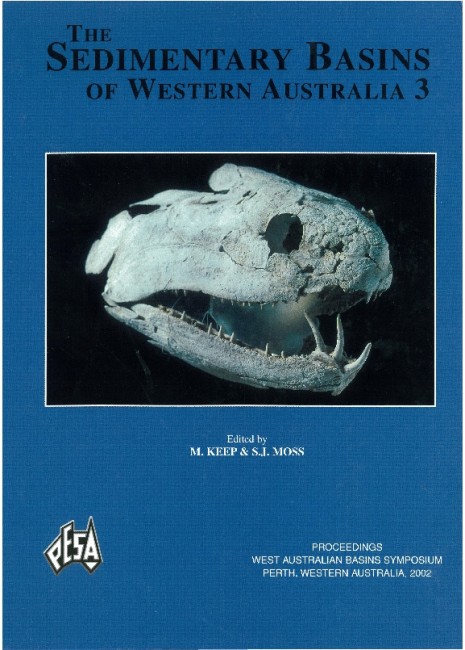Publication Name: The Sedimentary Basins of WA
Authors: R.D. M?ller, D. Mihut, C. Heine, C. O'Neill & I. Russell
Publication Volume: 3
Date Published: December 2002
Number of Pages: 39
Reference Type: Book Section
Abstract:
The under-explored Carnarvon Terrace, part of the offshore Carnarvon Basin, represents one of the remaining frontier areas on the northwest Australian margin. To assess the tectonic and volcanic evolution of this area, we have interpreted 6,700 km of 2D seismic profiles covering an area of 23,750 km2, and combined the results with geodynamic models to differentiate between alternative models for volcanism and margin uplift. Our data suggest a multi phase history of faulting and sediment accumulation in which major bounding faults were active during the Late Triassic and Early Jurassic. A major phase of uplift and erosion affected both the Bernier Platform and the Exmouth Sub-basin shortly before the breakup between Greater India and Australia prior to 130 Ma. Widespread lower Cretaceous sills, dykes and intrusions in the Exmouth sub-basin, and the offshore Wallaby and Zenith plateaus, provide evidence for syn- and post-rift volcanism. Whether or not the observed volcanism was due to a mantle plume is important for assessing the thermal and uplift/subsidence history of the area. Mantle convection modelling based on our global plate model and mantle density heterogeneities suggests that a mantle plume origin for volcanism is unlikely, as no known hotspot is found to underlie the Carnarvon Terrace area at breakup ime. However, if we accept the idea that the Bunbury Basalt of southwestern Australia, recently dated at 132 Ma, represents the earliest expression of the Kerguelen plume, then the syn- and post-rift volcanism may represent rifting above the Kerguelen plume head. The observed Early Cretaceous uplift of the Bernier Platform and Exmouth Sub-basin may represent either flexural rift-shoulder uplift or thermal uplift, accounting for erosion or non-deposition of the thick Permian, Triassic and Jurassic sections seen in onshore wells. Alternatively, the observed volcanism may have been driven by smallscale convection due to the juxtaposition of thick and thin lithosphere along the transform margin south of the Bernier Platform.

